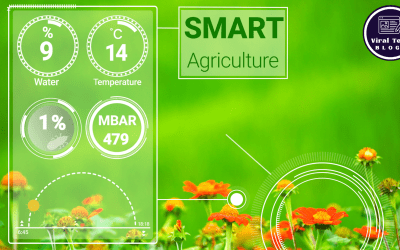In the age of digital marketing, content creation has become a crucial aspect of building an online presence and engaging with your target audience. Whether you’re a small business owner, a blogger, or a content marketer, producing high-quality and consistent content can be a time-consuming and resource-intensive endeavor. However, recent advancements in artificial intelligence, particularly with models like GPT-3, have revolutionized the way we approach content creation. In this comprehensive blog post, we will explore the potential of GPT-3 in automating blog posts and discuss its benefits, limitations, and ethical considerations.
Understanding GPT-3
GPT-3, short for “Generative Pre-trained Transformer 3,” is a state-of-the-art language model developed by OpenAI. It is the third iteration of the GPT series and has garnered significant attention for its remarkable ability to generate human-like text. GPT-3 is a neural network-based model trained on a vast corpus of text from the internet, making it proficient in understanding and generating text in multiple languages and on a wide
The Promise of Automated Blog Posts
Automating blog posts using GPT-3 holds immense promise for content creators and marketers. Here are some key benefits:
1. Time Efficiency
Creating high-quality blog posts can be time-consuming. Researching, writing, editing, and proofreading require significant effort. GPT-3 can generate content quickly, freeing up time for content creators to focus on other essential tasks, such as strategy development and audience engagement.
2. Consistency
GPT-3 ensures consistency in writing style and tone across your blog posts. This consistency can help maintain your brand’s identity and improve the overall user experience on your website.
3. Idea Generation
Sometimes, content creators may struggle to come up with fresh ideas. GPT-3 can generate topic ideas and outlines, helping content creators overcome writer’s block.
4. Multilingual Support
GPT-3’s ability to work in multiple languages can help businesses expand their reach to international audiences, creating content that resonates with a global customer base.
5. Cost Savings
Hiring content writers or agencies can be expensive. GPT-3 offers a cost-effective alternative, reducing the need for hiring additional writing resources.
Limitations of GPT-3 in Automated Blog Posts
While GPT-3 offers numerous advantages, it is essential to be aware of its limitations:
1. Lack of Creativity
GPT-3 generates content based on patterns in the text it was trained on. It may lack the creativity and originality that a human writer can bring to a blog post.
2. Limited Understanding
GPT-3 may not fully understand the nuances of specific industries or niche topics. Human expertise may still be required for specialized content.
3. Ethical Concerns
Automated content generation can raise ethical issues, such as plagiarism and the dissemination of inaccurate or biased information. Careful oversight and editing are necessary to mitigate these concerns.
4. Quality Assurance
GPT-3-generated content often requires thorough editing and review to ensure it meets the desired quality standards.
Ethical Considerations
As with any technology, the use of GPT-3 in automated blog posts comes with ethical considerations. Here are some key points to keep in mind:
1. Transparency
Clearly indicate when content is generated by AI to maintain transparency with your audience.
2. Review and Editing
Never publish GPT-3-generated content without human review and editing. This step is crucial for accuracy and quality assurance.
3. Avoid Plagiarism
Ensure that the generated content is original and not a verbatim copy of existing material.
4. Fact-Checking
Verify the accuracy of the information presented in automated content to prevent the spread of misinformation.
Use Cases of GPT-3 in Content Creation
To better understand how GPT-3 can be employed in content creation, let’s explore some practical use cases:
1. Blog Post Outlines:
Content creators can use GPT-3 to generate blog post outlines. By providing a topic or a few key points, GPT-3 can generate an outline that serves as a foundation for the article.
2. Content Expansion:
If you have a piece of content that’s a bit too short or needs more depth, GPT-3 can be used to expand on existing content by generating additional paragraphs or sections.
3. Product Descriptions:
E-commerce websites can use GPT-3 to automatically generate product descriptions, making it easier to maintain a large inventory of items.
4. Email Marketing:
Marketers can use GPT-3 to generate email marketing copy, helping them engage with subscribers more effectively.
5. Social Media Posts:
GPT-3 can assist in crafting engaging social media posts, saving time and effort for businesses and influencers.
6. SEO-Friendly Content:
Content generated by GPT-3 can be optimized for search engines, ensuring that your blog posts rank well in search results.
Overcoming the Challenges of GPT-3-Generated Content
While GPT-3 offers many advantages, there are some challenges associated with relying solely on AI-generated content. Here are strategies to overcome these challenges:
1. Human Editing and Review:
Always have human writers review and edit the content generated by GPT-3. They can ensure that the content is accurate, well-structured, and aligns with your brand’s voice.
2. Training and Fine-Tuning:
You can fine-tune GPT-3 for your specific needs. Training it on your industry’s terminology and style can result in more relevant content.
3. Quality Control:
Implement a rigorous quality control process to maintain the highest standards of content quality.
4. Monitoring for Plagiarism:
Use plagiarism-detection tools to ensure that the generated content is original.
5. Feedback Loop:
Continuously provide feedback to GPT-3 to improve the quality of future content it generates.
The Future of AI-Generated Content
As AI and natural language processing technology continue to advance, we can expect AI-generated content to become even more sophisticated. AI models like GPT-3 are just the beginning, and future iterations are likely to address many of the current limitations. However, it’s important to remember that while AI can assist in content creation, it should complement, rather than replace, human creativity and expertise.
Final Thoughts:
GPT-3 has opened up exciting possibilities for automating blog posts, offering time efficiency, consistency, and cost savings for content creators and marketers. However, it is essential to be mindful of its limitations and ethical considerations. By using GPT-3 as a tool to assist in content creation, rather than a complete replacement for human writers, businesses and bloggers can harness its potential while maintaining the integrity and quality of their content. As the field of AI continues to evolve, the responsible and creative use of technology like GPT-3 will play a crucial role in shaping the future of content creation. Embracing this technology while being aware of its challenges is the key to staying ahead in the ever-evolving landscape of digital marketing and content creation.





It’s the best time to make some plans for the future
and it is time to be happy. I’ve learn this publish and if I
may I want to counsel you some interesting
issues or advice. Maybe you can write subsequent articles regarding
this article. I want to read more issues about
it!
I do believe all the ideas you have introduced in your post. They are very convincing and can certainly work. Still, the posts are very short for beginners. May you please extend them a little from next time? Thank you for the post.
I love what you guys are usually up too. Such clever work and reporting!
Keep up the great works guys I’ve incorporated
you guys to our blogroll.